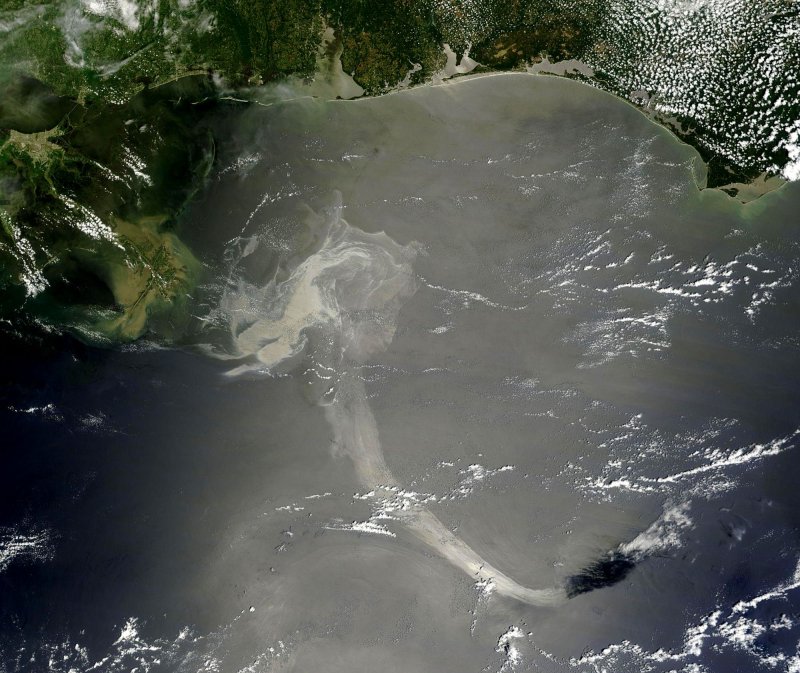NASA's Terra satellite captured a visible satellite image of the Gulf oil spill on May 17, 2010 from the Moderate Resolution Imaging Spectroradiometer Instrument on-board. The oil slick appears as a dull gray on the water's surface and stretches south from the Mississippi Delta with what looks like a tail. From top left to top right are the states Louisiana, Mississippi, Alabama and Florida. Scientists are worried that the huge plumes of oil could get into a current that would take the oil around Florida. UPI/NASA |
License Photo
COLLEGE STATION, Texas, Jan. 7 (UPI) -- Bacteria consumed almost all the methane released in the Gulf of Mexico oil spill, which may give clues to climate change in the arctic, U.S. researchers say.
Scientists say bacteria, evolved to process naturally seeping methane, multiplied dramatically in the gulf following the April explosion that sank a BP oil rig and spawned the leaking of millons of barrels of oil, the BBC reported Friday.
This has scientists looking at the arctic seabed and its fast stores of methane, the release of which could accelerate global warming around the world.
The gulf research could help scientists predict how serious methane releases in the arctic could be, how much might be consumed by bacteria in seawater and how much would make it into the atmosphere.
"In the arctic, there definitely would be some sort of microbial response; and in most places on the sea floor that have the capacity for massive release, there will be some seepage that will help to populate the water with microbes that could respond," lead researcher John Kessler of Texas A&M University said.
Research ships in the Arctic have regularly found evidence of methane bubbling into the atmosphere.
But scientists caution there are big differences between the Gulf of Mexico leak and potential methane sources in the arctic, which lie in much shallower waters.
The shallower the water, the less time methane would spend in it and in contact with bacteria, making absorption less likely, they said.















